Professor Meron Medzini served as the Director of Israel’s Government Press Office (GPO) in Jerusalem during the Six-Day War. In this fascinating memoir, he recalls the atmosphere of the time and the GPO strategy for briefing foreign journalists. He recounts how Defence Minister Moshe Dayan successfully concealed Israel’s opening strike from most of the world press and Arab world, how one American journalist creatively bypassed the military censor to report that war was imminent, how the mayor of Jerusalem drove journalists around in his personal car as the city was being shelled, and how a spontaneous trip to the Old City allowed the foreign press to record what subsequently became a historic iconic moment. He also relates the journalistic origins of those policy questions regarding the future of the West Bank that continue to challenge Israeli society today.
Foreign media in Israel before the war
In the early 1960s, Israel had a permanent press core of 50 foreign correspondents and a number of bureaus were maintained by foreign outlets, such as the Washington Post, New York Times and Newsweek. Many of these bureaus had Israeli assistants, and they were also aided by the Government Press Office (GPO) which translated material. Each member of the foreign correspondents had a cubby hole in the GPO offices and we saw them virtually every day.
The only major events in Israel covered by the international press in the years before 1967 were the 1961 Eichmann trial and execution, and the visit of the Pope in January 1964. In the mid-1960s Israel was suffering from a major economic recession with unemployment at 10 per cent, and morale so low that people joked that the last person to leave the airport should please turn out the lights. The ruling party Mapai was taking a beating in opinion polls, especially from a new breakaway part called Rafi, which was headed by Shimon Peres and Moshe Dayan. In general, though, Israel simply did not feature in the international news.
Early in 1967, there was little sense that something was about to erupt. In April, the IDF intelligence branch assessed that the earliest war was possible was in 1970-71. Clifton Daniels, who was one of the editors of the New York Times and who came to Israel to cover the 1967 Independence Day celebrations on 15 May, didn’t think there was any reason to extend his stay and returned to America.
Clouds of war gather
The ceasefire following the 1956 Sinai campaign had three components to help maintain quiet – the demilitarisation of the Sinai Peninsula, the installation of a UN emergency force (UNEF), and the guarantee that the Straits of Tiran would remain open.
The first component of this agreement was undermined during Independence Day 1967 when word reached the Chief of Staff Yitzchak Rabin and Prime Minister Levi Eshkol that Egyptian troops were moving into the Sinai with armour and artillery in broad daylight. This was followed by the UNEF withdrawal on 18 May. I accompanied a group of foreign correspondents to Kilometre 95, the Erez crossing point between Israel and the Gaza Strip to witness the Indian General, Indar Jit Rikhye search for a senior Israeli official in order to announce that his UN for ces were leaving. The Israeli commander at the gate – an unkempt, unshaven sergeant on reserve duty – was somewhat confused as to how to respond to the smart salute given to him by the departing Indian general.
Driven by the threats against Israel and the fiery slogans emanating from the Arab world, increasing numbers of foreign correspondents began to arrive. Two well-known journalists, Patrick O’Donoven and Jimmy Cameron, from the Sunday Times and the Observer asked us what Israel planned to do, but we didn’t know. The cabinet sat in virtually non-stop sessions but its response was indecisive.
Giving the foreign press a clear picture was challenging. No government officials were willing to speak to the foreign press. Prime Minister and Defence Minister Levi Eshkol refused to give interviews, as did Mapai Secretary General Golda Meir, former Prime Minister David Ben-Gurion and leader of the opposition Menachem Begin. Foreign Minister Abba Eban was willing to speak on background as was the Head of Military Intelligence, Aharon Yariv, who knew many foreign correspondents from his time as the IDF military attaché in Washington.
On 23 May, Egyptian President Gamal Abdel Nasser announced the re-imposition of the blockade on the Straits of Tiran, which the Prime Minister’s Chief of Bureau told me caused Eshkol to say “kinderlach, (children), this is war”. More foreign correspondents arrived, including top journalists such as Flora Lewis from the New York Times, Robert Toth from the LA Times, Arthur Vesey from the Chicago Tribune, Al Friendly from the Washington Post.
Censorship regulations were relaxed and the GPO gave foreign correspondents access to areas where reservists were concentrated and to the many volunteers, young and old, who had replaced reservists in hospitals, schools and kindergartens. Essentially, our goal was to show that Israel was not finished. Many correspondents personally knew reservists and were thus able to report on the daily routine of many families. Some even interviewed reservists at their bases. Many wrote about individual personal stories of average Israelis, many of whom were Holocaust survivors or veterans of the War of Independence and the Sinai Campaign. The overall picture was of a state under siege whose citizens feared for the fate of their families and country in light of the treachery of the world and the weakness of their leaders. Others wrote about how no human being in his right mind could fail to support the Israelis; that 22 years after the Holocaust, the [great] powers were once again impotent. One journalist, however, told me that he had ‘come for the wake’.
What the military censor did not allow to be shared were the preparations for mass temporary graves for tens of thousands of victims in Tel Aviv parks. The censor also banned reports that the Chief of Staff had experienced a breakdown and was incapacitated for two days. Rabin, who was receiving no guidance from the political echelon, had visited Ben Gurion – who criticised him for going to war without the support of a superpower and told him he would be responsible for the destruction of the ‘third temple’ – and Golda Meir – who had asked him what he was waiting for and wanted the IDF to strike as soon as possible.
The journalists realised that the IDF’s mobilisation could not continue indefinitely without the economy collapsing. Others, who were primarily fed by the government’s political rivals Rafi, reported on the clamour for the creation of a government of national unity, which eventually led to the appointment of Dayan as defence minister.
Yet, with the public worried and the government hesitant, the military was confident and was busy perfecting its operation to destroy the enemy’s airfields and air forces. Haim Bar-Lev, the Deputy Chief of Staff, coined a phrase that Israel was ‘going to screw them hard, fast and elegantly’.
On the weekend before the war began, the newly appointed Defence Minister Dayan ordered leave for many reservists and the beaches were full of people. He also organised a press conference in Beit Sokolov in Tel Aviv, which was the first briefing to foreign press since the crisis began. His aim, according to his memoirs, was to trick the Egyptians and give the impression that things were quiet, and that despite the new unity government being formed, Israel was still searching for a political resolution. Foreign correspondents thus reported that Israel was not about to go to war. Both Randolph Churchill – who Dayan had personally briefed – and his son Winston, actually returned to England, only to come back four days later angry at Dayan for making them miss the start of the war.
On Sunday morning I attended a cabinet meeting with other Israeli journalists where it was hinted that war would start the next day. While the military censor forbade this information being shared, one foreign correspondent, Arthur Vesey from the Chicago Tribune, heard from a doctor in Hadassah hospital that they were told to send all of unnecessary patients home, and thus assumed war was imminent. Vesey sent a cable to his newspaper saying that Israel was at readiness for war of ivory soap. No one in Israel – including the military censor – had a clue that the slogan for ivory soap in the US was that it was 99.44 per cent pure, so the message that war was imminent reached the Chicago Tribune news desk.
The war begins
Despite the resounding military success on Monday (Day 1), when the Egyptian air force was destroyed, Israel made no attempt to deny reports coming from Radio Cairo, Damascus and Amman that Arab planes had bombed Tel Aviv, Haifa and Jerusalem and caused massive casualties. These radio reports were repeated across the world, causing distress to supporters of Israel, but Dayan wanted the world to continue to view Israel as the victim for as long as possible. When news of Israel’s initial success did break, many foreign correspondents came to Jerusalem, in the belief that it would become the story of the war. Some journalists who had been stationed on the Jordanian side of the city reported on the despair felt by the residents of East Jerusalem, who had believed that the capture of Tel Aviv by Arab forces was imminent.
The GPO accompanied correspondents to the front. On Wednesday morning (Day 3), I took a group of foreign journalists, including Mike Elkins of the BBC and CBS, to the American Colony Hotel in the eastern part of Jerusalem, before realising we could continue to the Old City itself. I returned to the Russian compound, organised some vehicles and we drove to the Lions Gate, approaching the Mosque and the Western Wall, which had been captured only half an hour earlier.
There was enormous excitement – even among veteran correspondents – and many of the soldiers were crying. We arrived exactly at the time that Shlomo Goren, the Chief Military Chaplain, blew the shofar and left shortly before Dayan and Rabin arrived at the Wall. Elkins later told me that when his report went out Wednesday morning New York time, thousands of American Jews went out into the streets to celebrate. I was later reprimanded by the army spokesman for this spontaneous visit, and told that I had no right to risk the lives of foreign correspondents. The spokesman was right. One photographer, Paul Schutzer, was killed during the war while driving in an armoured personnel carrier in the south, while an American correspondent for NBC was killed in separate incident.
Another person who played a very important role in our information efforts was Mayor of Jerusalem Teddy Kollek. He made the rounds and asked me to assign reporters to his car. As the city was being shelled he was driving foreign correspondents around town.
During the war, the GPO let the correspondents roam around freely, which was not done in the Yom Kippur War, nor during the First Lebanon War. We also embedded correspondents in units, one of whom immortalised the IDF officer who took a dip in the Suez Canal while waving his rifle. This photo became the front page of Life magazine which was dedicated to the Six-Day War. What the correspondents didn’t know was that the soldier who swam in the canal had disobeyed specific orders from the Defence Minister who forbade Israeli forces from approaching the water.
(Life Magazine, 23 June 1967)
Policy questions
The first media challenge occurred on Thursday (Day 4) when correspondents visited Jericho and saw long lines of Arab refugees walking towards the destroyed Allenby Bridge across the Jordan River. That night a group of journalists asked me ‘What’s next?’
The war had been so quick Israel didn’t have time to plan clear political goals. Dayan told people he was waiting for a phone call from Arab capitals and that Israel intended to be a benign occupier. I took some correspondents to see the first governor general of the West Bank, Chaim Herzog, who stressed that Israel was prioritising normalising life in Jerusalem, providing clean water and cleaning up the streets. The policy was essentially to let the correspondents wander around, and talk to whoever they wanted.
Two days after the war ended, some Israeli officials, myself among them, found Eshkol, who was due to make a victory speech at the Knesset, slumped in his chair. He asked us, “Kinderlach (children), what will we do with all this?” In retrospect, I see that he understood the size of the problem. A day or two later, Ben-Gurion said Israel should give back all the territories apart from East Jerusalem and the Golan Heights. On 19 June the government adopted a secret resolution instructing Eban to tell the Americans that Israel was prepared to withdraw from the Golan and Sinai for full peace with Syria and Egypt and a willingness to create special arrangements with Jordan. This offer was something the journalists and even the Chief of Staff didn’t know about.
Ultimately a number of political camps emerged after the war. Yigal Allon came up with his own eponymous plan. Eban promoted an Israeli disengagement in return for some sort of glorified armistice. But in general Israel was under the spell of this amazing victory and we began to enter a period of bewilderment and euphoria where we didn’t know what to do. The policy was essentially to use the territories as a bargaining chip. In some ways, the Palestinians and Arabs were stunned until the First Intifada in 1987.
The legacy of the 1967 war for international media
Following the war many correspondents retuned home and wrote glowing articles. In America the war had special resonance because of its contrast with the Vietnam War, where the US was bogged down and had deployed 535,000 soldiers. The war also turned Israel into a centre of world news, with the number of correspondents based in the country quadrupling to 200.
One continuing public diplomacy challenge for the Israeli government was dealing with the country’s image in the eyes of global public opinion. Those responsible for public diplomacy couldn’t decide whether they wanted Israel to be perceived as a state under siege fighting for its survival, a type of ‘Samson the weakling’ as once described by Eshkol, or Israel as a strong modern state, a leader in high tech, with strong achievements in research, science, culture, music, art and literature (in 1965 we organised meetings for correspondents with Shmuel Yosef Agnon who was the first Israeli to win a Nobel Prize).
Israel has also been unable to decide on its position regarding the future of the West Bank. The multiplicity of agencies dealing with the foreign press – each one connected to a different minister with different political positions – didn’t make this challenge easier following the war. The GPO was under the Prime Minister, while the spokesperson of the Foreign Ministry was guided by Eban, who had dovish views, and the IDF spokesperson was under Dayan and thus reflected his position. Experienced foreign journalists didn’t always succeed in working out who was speaking in the name of the government and what its official policies were. Israel has a similar challenge today, exacerbated by its coalitional politics. Even as Netanyahu visits Washington senior members of his cabinet often speak a different language.

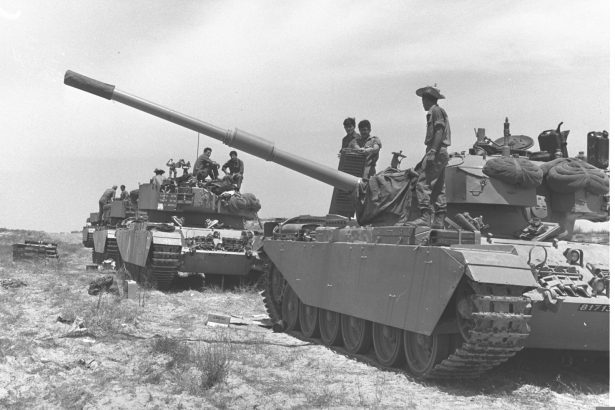
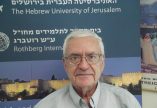
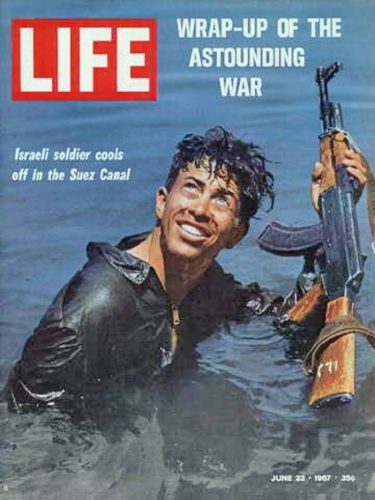
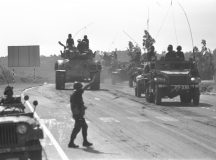
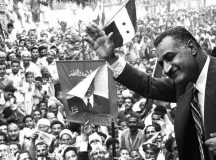
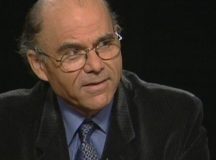































Comments are closed.